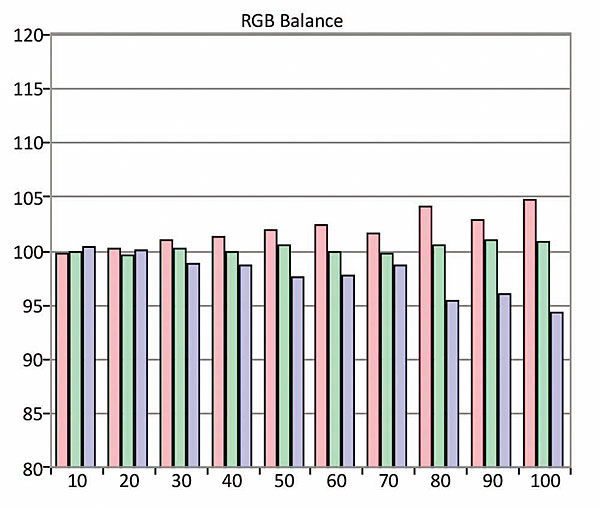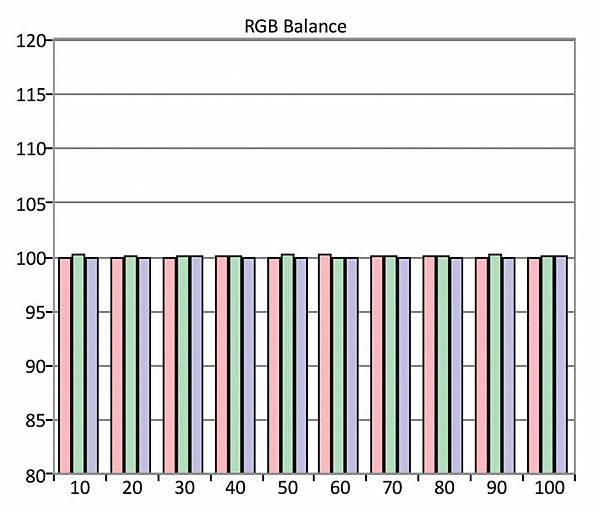LG 65EF9500 OLED Ultra HDTV Review Test Bench
Measurements were made using SpectraCal CalMAN measurement software, Photo Research PR-650 and Klein K-10A color meters, and AVFoundry VideoForge 2K and DVDO 4K pattern generators. All calibrations were performed in 1080p and Rec. 709.
Full-On/Full-Off Contrast Ratio: Unmeasurable
At a peak white light output of 50 ft-L (Expert1 Picture Mode, LED Light at 50, Contrast at 75, Brightness at 49), the black level couldn’t be measured (in effect, it was totally black).


On a white window test pattern, the peak available light output I measured in the Expert1 Picture Mode, with both the OLED Light and Contrast controls set to 100 (maximum), was 113 ft-L (387 nits) on both 2% and 18% white window patterns and 36 ft-L (123 nits) with 100% full screen peak white (OLEDs respond much like plasmas in this respect). No other mode, even Vivid, produced a higher peak white level, and in any case, only the Expert modes offered the fullest range of white balance and color management controls. This is roughly half the peak white level we recently measured on Vizio’s RS65-B2—and the latter can maintain this peak level on a full white screen.
In the Expert1 mode, adjusted for just over 50 ft-L peak white, the pre-calibration grayscale Delta E values (20 to 100%) ranged from a low of 0.92 at 70% to a high of 3.15 at 100%. After calibration, using both the 2-point and 20-point white balance controls, the Delta Es ranged from 0.13 at 100% to 2.27 at 30%.
Pre-calibration, the color Delta Es ranged from 0.51 on green to 2.94 on blue. After calibration, the only value higher than 0.60 was blue at 2.78. These readings were taken prior to a subjective readjustment of the blue luminance from the calibrated value of –30 (which caused visible issues) to a setting of 5 (which worked far better).
(Delta E is a figure of merit that indicates how closely a display adheres to the color standard. Experts generally agree that at levels below 3 to 4, the result is visibly indistinguishable from perfect color tracking.)

With the Gamma control set to 2.2, the set’s gamma from 20 to 100% ranged from 2.01 at 60% to 2.19 at 90%. While this would appear to be a little too low, in effect it proved almost visually indistinguishable from the LG’s BT.1886 Gamma setting. Changing the Gamma setting to 2.4 produced values from 2.22 at 60% to 2.43 at 100%. This worked better on some material, but on most sources it looked too dark.
For most of my viewing, I preferred an image about 10 ft-L less bright than the 50 ft-L produced by the above calibration. Turning down the OLED Light to a setting of 40 (the lowest I tested, producing 35 ft-L) didn’t degrade the calibrated results in any visibly significant way.—TJN



























































